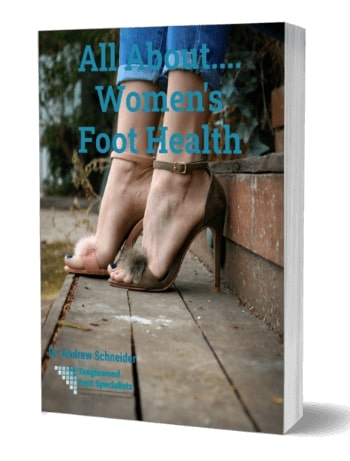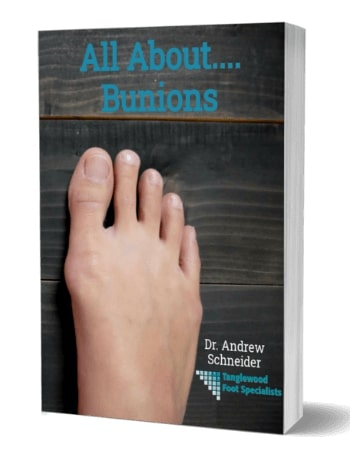When you hear about named structures, syndromes, and procedures in medicine, it usually has to do with the person who discovered or invented it. I get asked all the time in my Houston podiatry practice about the Tailor's bunion.
A tailor's bunion, or bunionette, is a painful prominence on the outside of the foot. The bunion is an enlargement that looks like a bump, formed just beneath the fifth toe. It is caused because of abnormal mechanical structure of the foot that makes the fifth metatarsal rotate towards the outside of the foot. Sometimes a tailor's bunion is found along with a bunion, a similar prominence found beneath the big toe. Often, however, a tailor's bunion is found without a corresponding bunion.
So, why did this pinky-toe protuberance get it's own name? And why is this guy named Tailor special enough to lend his name to a bump on the outside of your foot? Well, rest assured, the tailor's bunion is not named for any one individual. It's coined for the ways in which this bunionette can form.
Causes and Development
A tailor's bunion develops due to abnormal biomechanical forces. It was often considered as a result of the tailor position, which is sitting cross-legged. In truth, it is due to the overall mechanical structure of your feet. This deformity occurs when your fifth metatarsal bone, which connects your little toe to the rest of your foot, rotates towards the outside edge of their feet. This rotation causes a painful bony prominence or bump to form on the side of your foot near the base of your little toe. That bump is the side of the fifth metatarsal head.
The development of a tailor's bunion can be influenced by various factors, including genetics, foot structure, and footwear choices. Many people blame high heels or tight shoes for causing a bunionette. In most cases, that's not the main issue. In fact, it is the bump that is aggravated by wearing shoes. If your family members have a history of this condition, you might be more prone to developing it as well.
It's essential to identify and address the factors contributing to its formation to prevent a tailor bunion from getting worse. By making some simple adjustments to your footwear or using a custom foot orthotic, you can help manage the pain and potentially stop the progression of this bothersome deformity.
Remember, you're not alone in dealing with this issue, and there are plenty of ways to find relief and support for your feet.
Symptoms of a Tailor's Bunion
You might notice some discomfort and swelling on the outside of your foot, which could indicate the presence of a tailor bunion. The tailor's bunion is a bump near the base of your little toe, and it can cause pain and irritation, especially when you wear shoes that don't provide enough room for your feet.
The symptoms of a tailor's bunion may include redness and tenderness around the affected area, as well as the development of a soft corn or callus between your little toe and the neighboring toe. If you're experiencing any of these issues, it's important to seek help from a podiatrist to ensure the proper care and treatment for your feet.
During your visit, I will perform a thorough examination of your foot, including an x-ray to evaluate the structure and alignment of your metatarsal bones. This imaging can help determine the severity of your tailor's bunion, the underlying cause of your bunion pain, and whether surgery might be necessary to correct the issue.
Non-Surgical Treatment for a Tailor's Bunion
When it comes to non-surgical treatments for that pesky bump on the side of your foot, there's hope for relief without requiring foot surgery.
The first step in finding relief from your tailor's bunion is to make sure you're wearing shoes that provide enough room for your toes, especially around the midfoot and toes. By wearing shoes with a wide toe box or opting for open-toed shoes, you can help alleviate the pressure on the bunionette and reduce pain. These types of shoes eliminate the constant rubbing that causes the pain on the outside of the foot.
Additionally, using a tailor's bunion pad or gel cushion can provide extra protection and comfort, making it easier for you to go about your day without feeling like your foot is constantly aggravated. In some cases, anti-inflammatory medication, such as ibuprofen, will help to relieve pain from a painful bunionette.
For those of you who need a little more support, custom foot orthotics might be the answer to your tailor's bunion woes. These devices are designed to realign the foot and redistribute pressure more evenly, which can help halt the progression of the bunionette and provide much-needed pain relief. Custom-made orthotics are specially designed to provide support to your foot and ankle, helping to redistribute pressure and alleviate the discomfort caused by a tailor's bunion.
By neutralizing the forces that contribute to the formation of the bunionette, orthotic interventions can help stop its progression and allow you to wear shoes without pain. Just imagine being able to slip into your favorite pair without worrying about that pesky tailor's bunion causing you grief!
When selecting shoes, it's essential to choose styles with a wide toe box to accommodate your tailor's bunion and any orthotic interventions you may be using. This extra room will prevent unnecessary pressure on the bunionette and provide a more comfortable fit for your foot.
Physical therapy, stretching exercises, and over-the-counter anti-inflammatory medications can also be beneficial in managing the foot pain associated with a tailor's bunion.
Remember, you're not alone in your quest for relief—there are plenty of non-surgical treatment options out there, so don't hesitate to explore what works best for you and your unique needs.
Surgical Treatment
If conservative measures don't alleviate the discomfort caused by a bunionette, surgical correction might be necessary to get you back on your feet pain-free. There are various surgical correction options available for treating a tailor's bunion, and I will help you determine the most suitable approach based on your symptoms and the severity of the protrusion.
These procedures typically involve realigning the fifth metatarsal bone, removing the excess bone around the toe joint. While undergoing surgery might seem daunting, know that you're not alone – many others have successfully walked this path to find relief from swelling and pain.
Recovering from tailor's bunion surgery will require some patience and dedication. You'll likely need to wear a surgical shoe or boot for a few weeks to protect your foot and allow it to heal properly. It's essential to follow your the postoperative care instructions closely, and don't hesitate to reach out for help if you have any concerns.
Before you know it, you'll be back to enjoying your favorite activities without the nagging discomfort of a tailor's bunion.
If you have noticed that you have developed a bump on the outside of your foot that is becoming painful when you wear shoes, don't wait for it to get worse! Contact Tanglewood Foot Specialists to schedule an appointment with Dr. Andrew Schneider. I will explain your options to treat your tailor's bunion and make sure you are never limited by foot pain.











